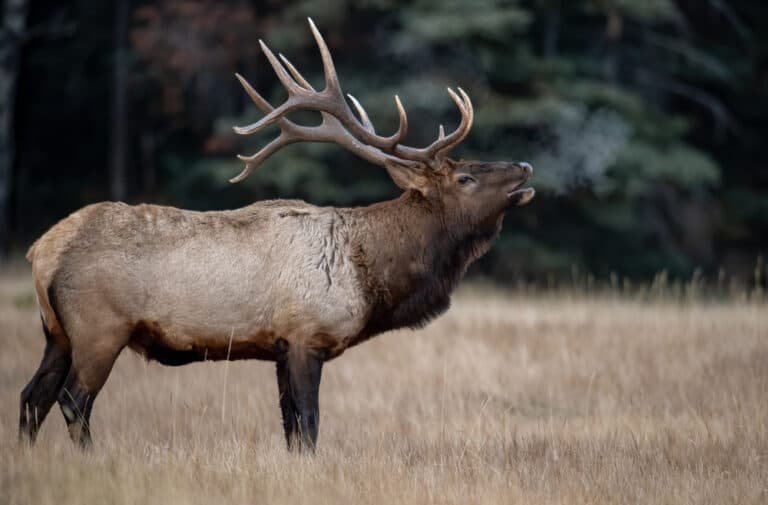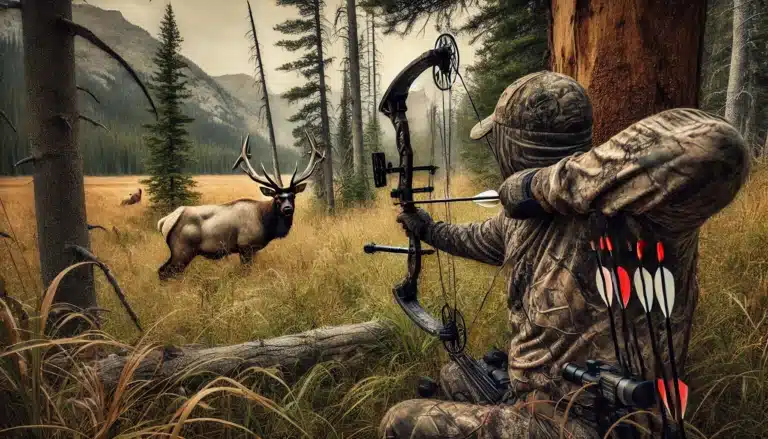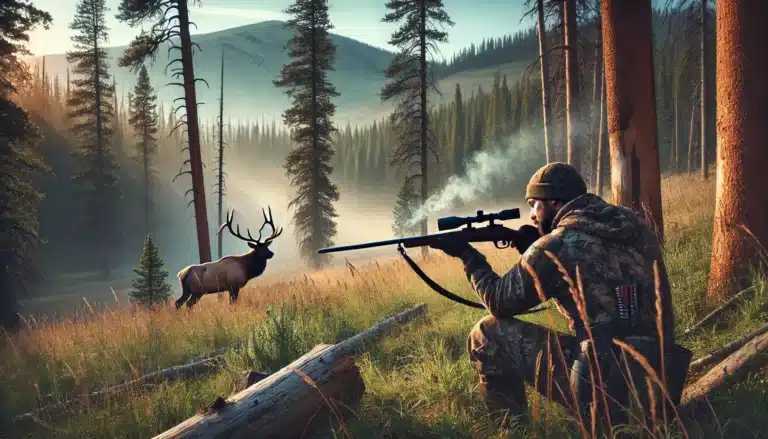The Best Elk Rifle Guide for 2024: Big Game Hunters Agree
Ask any elk hunter about their most memorable hunt, and they’ll likely tell you about that perfect moment when everything lined up – the bull appearing at dawn, the steady rest against a pine tree, and their trusty rifle delivering when it mattered most. But they might also tell you about that heartbreaking moment when their rifle wasn’t up to the task. Let’s discuss the choices for the best elk rifle.
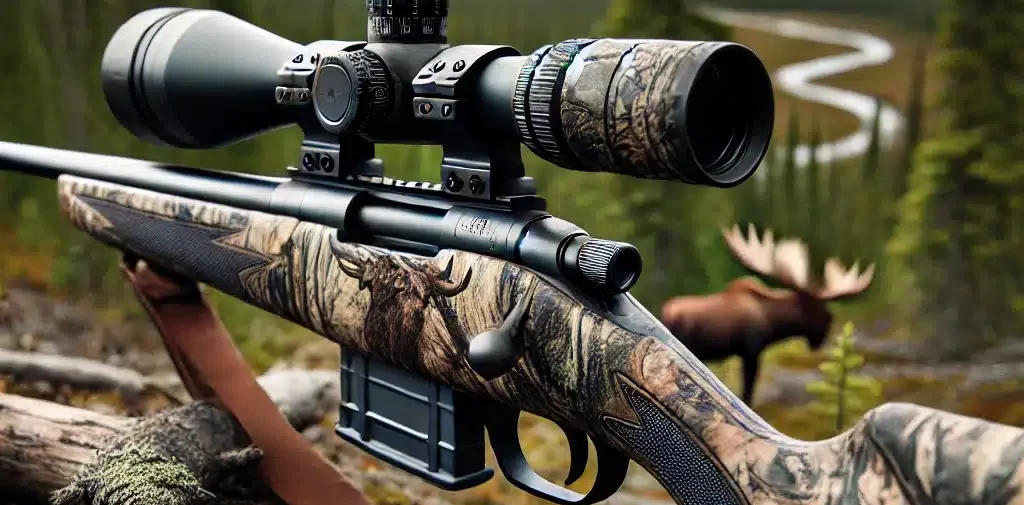
I’ve been chasing elk across the Rockies for over 15 years, and if there’s one thing I’ve learned, it’s that your choice of rifle can make or break your hunt. Whether you’re saving up for your first elk rifle or looking to upgrade your current setup, this guide will help you make a choice you won’t regret halfway up a mountain.
Let’s be honest – there’s no such thing as the perfect elk rifle for everyone. But there is a perfect rifle for you, your hunting style, and your budget. In this guide, we’ll cut through the marketing hype and focus on what really matters in elk country: reliability, accuracy, and real-world performance.
Here’s what we’ll cover:
- Which rifles consistently perform in harsh mountain conditions
- How to get the most bang for your buck across different price ranges
- Real talk about actions, stocks, and weather resistance
- Practical advice from hunters who’ve learned the hard way
What Makes the Best Elk Rifle?
Let’s start with some straight talk – elk are tough animals that deserve respect. At up to 700 pounds and capable of covering miles of rough country, these magnificent beasts require a rifle that can deliver clean, ethical kills across varying distances.
The Hard Truth About Power and Distance
I remember my first elk hunt with a rifle that was too light for the job. The 243 Winchester I’d used for whitetails back East seemed like enough gun… until I had a bull quartering away at 280 yards. That day taught me a lesson I’ll never forget about proper elk calibers.
Here’s what you need to knock down an elk
- Minimum caliber: 30-caliber (like the tried-and-true .308 Winchester)
- Better options: 7mm Remington Magnum, .300 Winchester Magnum
- Most common shots: 100-400 yards
- Energy needed: At least 1,500 ft-lbs at impact
Mountain-Ready Features That Matter
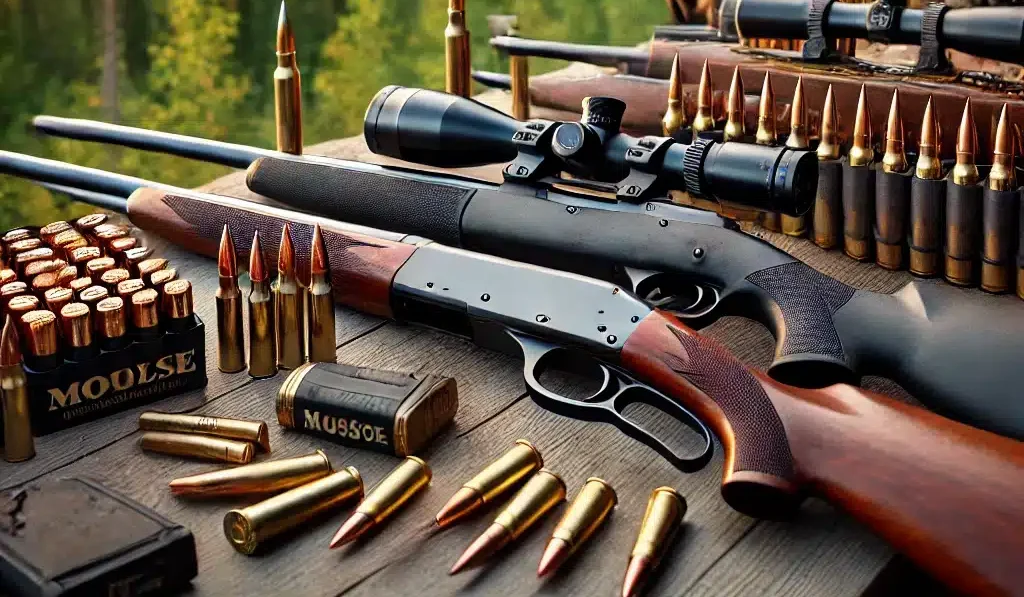
Every ounce counts when huffing it up a steep slope at 9,000 feet. But go too light, and you’ll regret it when that bull steps out at 300 yards and your pencil-thin barrel is whipping in the wind. Here’s what to look for:
Sweet Spot Specs
- Weight: 7-8 pounds (scope mounted)
- Barrel length: 22-24 inches
- Magazine capacity: 3-4 rounds minimum
- Scope mounting: Solid base and rings rated for magnum recoil
Durability Checklist
- Controlled-round feeding preferred
- Quality bedding system
- Weather-sealed action
- Rust-resistant finish
Reality Check: What You Need vs. Marketing Hype
I’ve seen $400 rifles take elk cleanly and $4,000 rifles fail when it mattered most. The truth is reliability trumps luxury every time.
Your elk rifle needs to:
- Function flawlessly in freezing rain
- Hold zero after bouncing around in a sheath
- Shoot straight, even when you’re not babying it
- Handle rough treatment in the field

Top Elk Rifles By Price Range
Let’s break down your best options, whether you’re pinching pennies or ready to invest in your dream gun. Remember – I’ve seen cheap rifles kill elk just as dead as fancy ones, but there are real differences in durability and features as you move up in price.
Premium Tier ($1,500+): The “Buy Once, Cry Once” Category
1. Weatherby Mark V Backcountry Ti ($2,699)
Think of this as the Ferrari of elk rifles. Is it necessary? No. Is it amazing? Absolutely.

- Titanium action cuts weight dramatically
- Sub-MOA accuracy guaranteed
- Cerakote finish, no match for mountain weather
- Carbon fiber stock with aluminum bedding
- Drawback: Your spouse might not speak to you for a month
2. Kimber Mountain Ascent ($2,099)
The mountain hunter’s dream that’s worth the money:

- Incredibly light at 5.5 lbs
- Controlled-round feeding
- Weather-resistant everything
- Handles like a dream offhand
- Drawback: Kicks like a mule due to lightweight
Mid-Range ($800-1,500): The Sweet Spot
1. Remington 700 Long Range ($999)
The old workhorse that works:

- Proven action that’s killed more elk than we can count
- Heavy barrel for steady shooting
- Great aftermarket support
- It comes in all the right calibers
- Drawback: Heavier than some newer options
2. Savage 110 Ultralite ($899)
Best bang for your buck in the middle range:

- Carbon fiber-wrapped barrel
- User-adjustable AccuTrigger
- Great accuracy for the price
- Modern features without breaking the bank
- Drawback: Some find the styling too modern
Budget-Friendly ($500-800): More Than Capable
1. Ruger American ($629)
Don’t let the price fool you – this rifle works:

- Three-lug action
- Rotary magazine
- Free-floated barrel
- Clean-breaking trigger
- Drawback: Plastic feels cheap but functions fine
2. Mossberg Patriot ($449)
The working man’s elk rifle:

- Surprisingly good accuracy
- Fluted barrel saves weight
- Lightning Bolt-Action (LBA) trigger
- Available in all major elk calibers
- Drawback: Fit and finish shows the price point
Real Talk About Price vs. Performance
Here’s what nobody else will tell you: The difference between a $500 rifle and a $2,000 rifle isn’t accuracy – it’s consistency and durability. A budget rifle might shoot great, but:
- Will it stay that way after 500 rounds?
- Can it handle being banged around on horseback?
- Will the finish resist rust after days in the rain?
- Does it feed smoothly when you’re buck fever shaky?
Action Types, Stocks, and Weather Resistance
Bolt Actions: The Gold Standard
Let’s be real – there’s a reason 90% of serious elk hunters pack a bolt gun:
- Simple means reliable
- Easier to keep water and crud out
- Better accuracy potential
- Stronger lockup for magnum loads
Quick Tip: Watch for smooth bolt lift under pressure. That beautiful butter-smooth action at the gun shop might turn into a sticky mess when you’re lying awkwardly on a hillside.
Semi-Autos: The Controversial Choice
Yes, you can hunt elk with a semi-auto. But should you?
Pros:
- Faster follow-up shots
- Less felt recoil
- Good for physically limited hunters
Cons:
- More complex = more failure points
- Generally heavier
- Harder to clean in the field
- More sensitive to extreme cold
Lever Actions: The Traditional Option
Some old-timers swear by them, especially in thick timber:
- Quick handling
- Nostalgic appeal
- Great for brush hunting
- Limited to certain cartridges
Stock Materials: Making the Right Choice
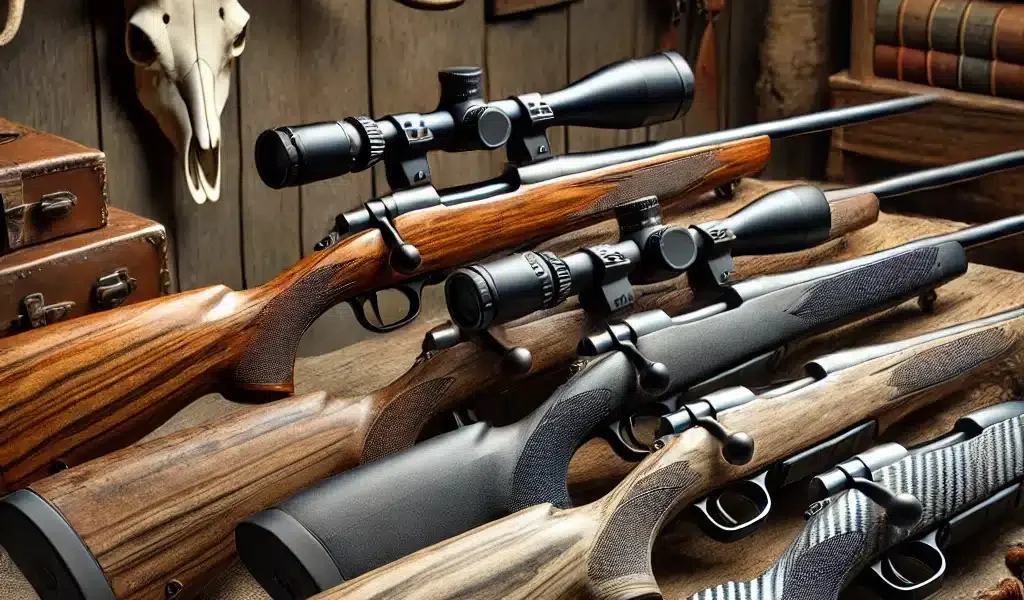
1. Synthetic Stocks
Personal experience: I switched to synthetic after a beautiful wood stock cracked during a pack-out in the Bitterroots.
Pros:
- Virtually indestructible
- It won’t swell in wet weather
- Lighter weight
- No maintenance needed
Cons:
- Can feel cheap on budget rifles
- Noisy when bumped
- Cold to handle
2. Wood Stocks
- Traditional look and feel
- Better natural pointing
- Absorbs recoil well
- Requires more care
- Can shift zero if not properly sealed
3. Composite Stocks
- Carbon fiber options are ultra-light
- Superior strength
- Weather resistant
- Premium price tag
- Some can be too light for steady holding
Weather Resistance: Because Elk Don’t Care About Rain

Finish Options
True story: Watched a buddy’s blued barrel rust during a week of constant drizzle in Idaho.
Cerakote
- Top choice for serious hunters
- Extremely durable
- Thin and even
- Expensive but worth it
Stainless Steel
- Nearly rust-proof
- Can be too shiny
- Holds up well long-term
- Slightly softer than blued steel
Traditional Bluing
- Beautiful classic look
- Requires constant care
- Most affordable
- Least weather resistant
Weather-Proofing Tips from the Field
- Scope bases need weather protection too
- Check and seal all wood-to-metal seams
- Keep action lubrication minimal
- Consider a neoprene scope cover
- Always carry a lightweight gun cloth
Making Your Final Decision: Real Advice from the Mountain
After all my years guiding and hunting elk, I’ve learned that the “perfect” rifle isn’t about having the most expensive setup. It’s about finding the right tool you can trust when everything’s on the line. Ask yourself these questions:
Be honest – what’s your real shooting range?
- Most shots under 200 yards? Save money on a simpler rifle
- Regular shots over 300? Invest in premium glass and a better barrel
- Hunting thick timber? Consider shorter barrel length
What’s your physical situation?
- Planning on high-country hunts? Every ounce matters
- Mostly road hunting? Weight is less critical
- Shoulder problems? Look at muzzle brakes or managed recoil loads
What’s your real budget? Remember this formula:
- Rifle: 100% of your budget
- Scope: 100% of rifle cost
- Mounts/Rings: 10% of scope cost
- Practice Ammo: At least 200 rounds before the season
My Recommendations
For First-Time Elk Hunters
- Savage 110 in .300 Win Mag
- Leupold VX-3HD scope
- Total package under $1,500
- Proven reliability without breaking the bank
For Mountain Hunters
- Weatherby Mark V Backcountry
- Premium lightweight scope
- Yes, it’s expensive
- It’s worth every penny when you’re 10 miles in
For Budget-Conscious Hunters
- Ruger American
- A mid-range scope like Vortex
- Save money for good ammo
- Practice more to offset equipment limitations

Final Words of Wisdom
Remember these three things:
- The best rifle is the one you shoot well
- No rifle works without practice
- Expensive doesn’t always mean better
Don’t get caught up in the “latest and greatest” trap. I’ve seen more elk taken with modest rifles and good shooting than with expensive guns and poor fundamentals.
Your Next Steps
1. Handle before buying
- Shoulder the rifle multiple times
- Work the action in awkward positions
- Check trigger pull and reset
2. Break it in right
- Clean properly before the first shooting
- Follow the manufacturer’s break-in procedure
- Shoot at least 100 rounds before hunting
3. Practice realistically
- Shoot from field positions
- Practice with hunting clothes on
- Use your hunting ammo for final sight-in
Remember, the rifle you choose is just the beginning. The time you spend learning its quirks and practicing with it really matters. Now get out there and make it count!

